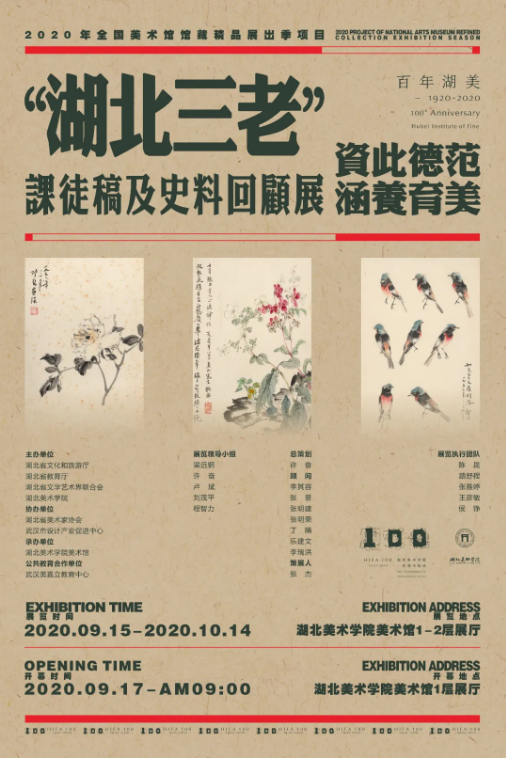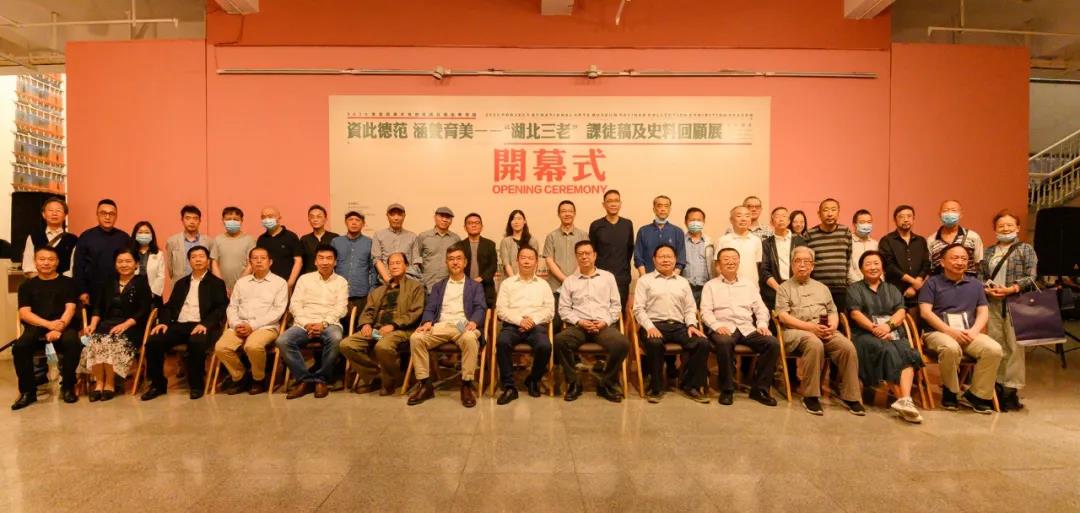
At 9:00 a.m. onthe morning of September 17, 2020, the “Moral Models and Masters of Arts– Retrospective Exhibition on Lectures and Historical Data of‘The Three Senior Artists in Hubei’” openedin Tanhualin Art District Art Museum of HubeiInstituteof Fine Arts (HIFA). Yang Jun,DeputySecretary and Deputy Director-General of Hubei Provincial Department of Culture and Tourism,Ma Shangyun, party member and ViceChairman of Hubei Provincial Federation of Literary and Art Circles,Chen Liyan, Vice Chairman of Hubei Artists Association, Peng Rong, secondary researcher of the Art Division ofHubei Provincial Department of Culture and Tourism, Zhang Xiaobo,level 3 principal staff member of the Art Division ofHubei Provincial Department of Culture and Tourism, Wang Yuanyuan, DeputySecretary-Generalof Hubei Artists Association, Fu Zhongwang, Art Director of Hubei Museum of Art, Ji Shaofeng, Curator of Human Museum of Fine Arts, Lu Hong, Executive Curator of United Art Museum, Li Heqing, party member and Deputy Director of Hubei Provincial Academy of Fine Arts, Wang Xinyao, Curator of Tanghu Museum of Art, Xie Xiaohong, Deputy President of Hubei Provincial Academy of Fine Arts, Hu Ying, Deputy Curator of Hubei Museum of Art, Song Wenxiang, Curator Assistant of Wuhan Museum of Art, andleaders and guestsfrom Jianghan University, Hubei University of Technology and otherpeer colleges, relevant art institutions and Hubei Fine Arts Publishing House attended the opening ceremony.
Liang Yuangang,PartySecretary,Xu Fen, DeputyPartySecretary andPresident,Lu Bin, Deputy Party Secretary, Liu Maoping, Vice President, and Cheng Zhili, Vice President of HubeiInstitute of Fine Arts, Xu Yongmin, former president of HubeiInstitute of Fine Arts, Sun Dingqing,grandson of Wang Xiazhou, Zhang Pu, son of Zhang Zhenduo, Zhang Mingjian and Zhang Mingrong, grandsons of Zhang Zhaoming, andheads of variousschools anddepartments as well as relevant functional departments attended the opening ceremony. The opening ceremony was presided over by Zhang Jie,Curator of theArtMuseum.
More than 180 workswill be exhibited in Tanhualin Art District Art Museum of HubeiInstitute of Fine Arts from September 15 to October 14, 2020. Welcome to the exhibition.
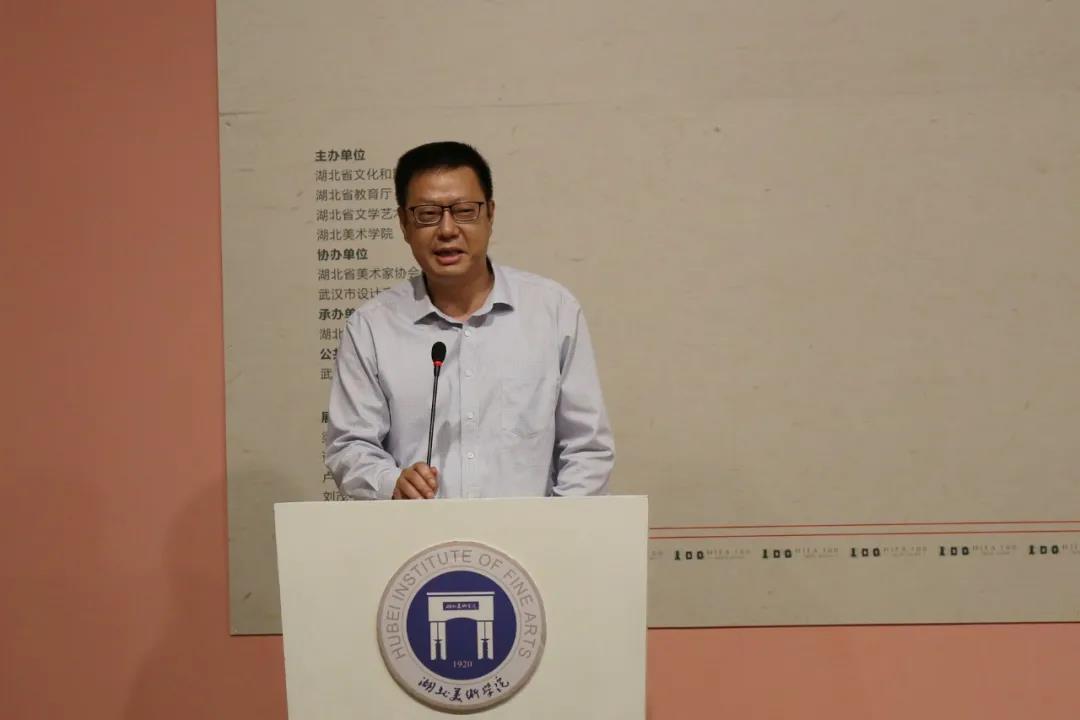
Yang Jun,DeputyPartySecretary andDeputyDirector ofHubei Provincial Department of Culture and Tourism announced the opening of the exhibition
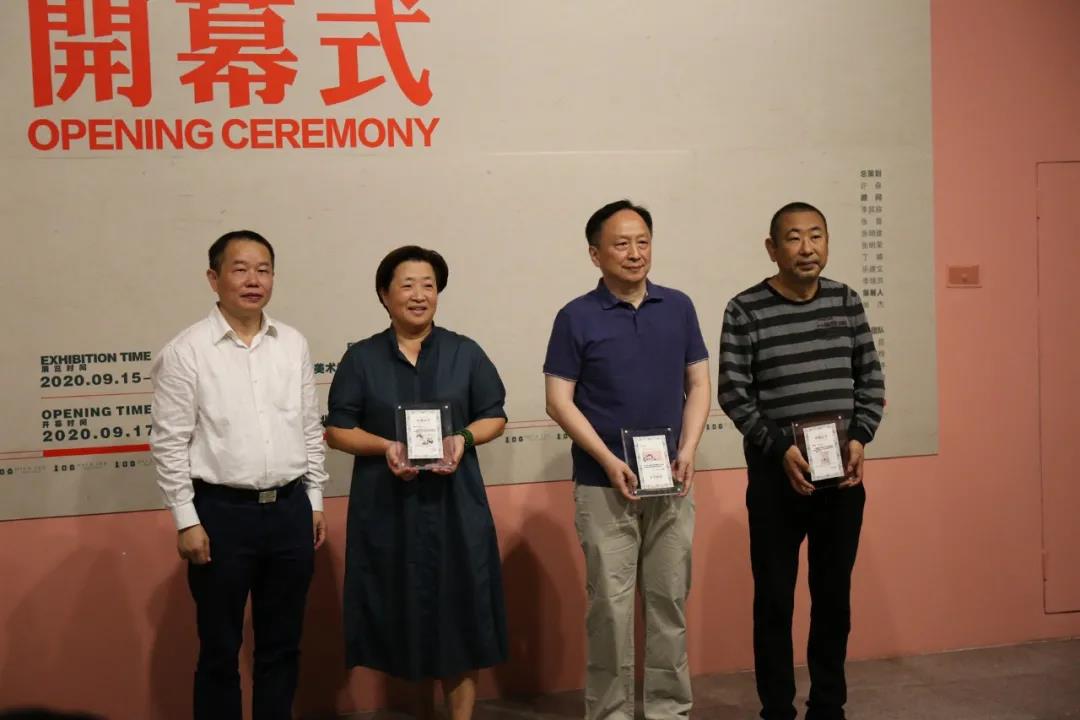
Liang Yuangang, Party Secretary of HIFA issued collection certificates
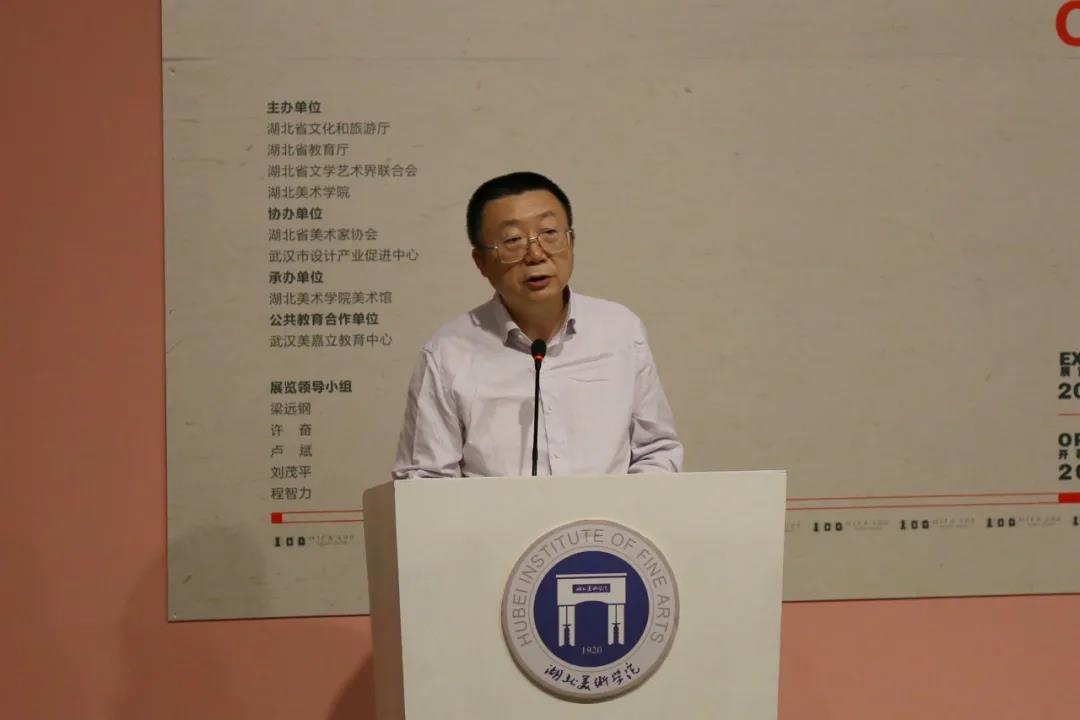
Xu Fen, Deputy Party Secretary and President of HIFA gave a speech
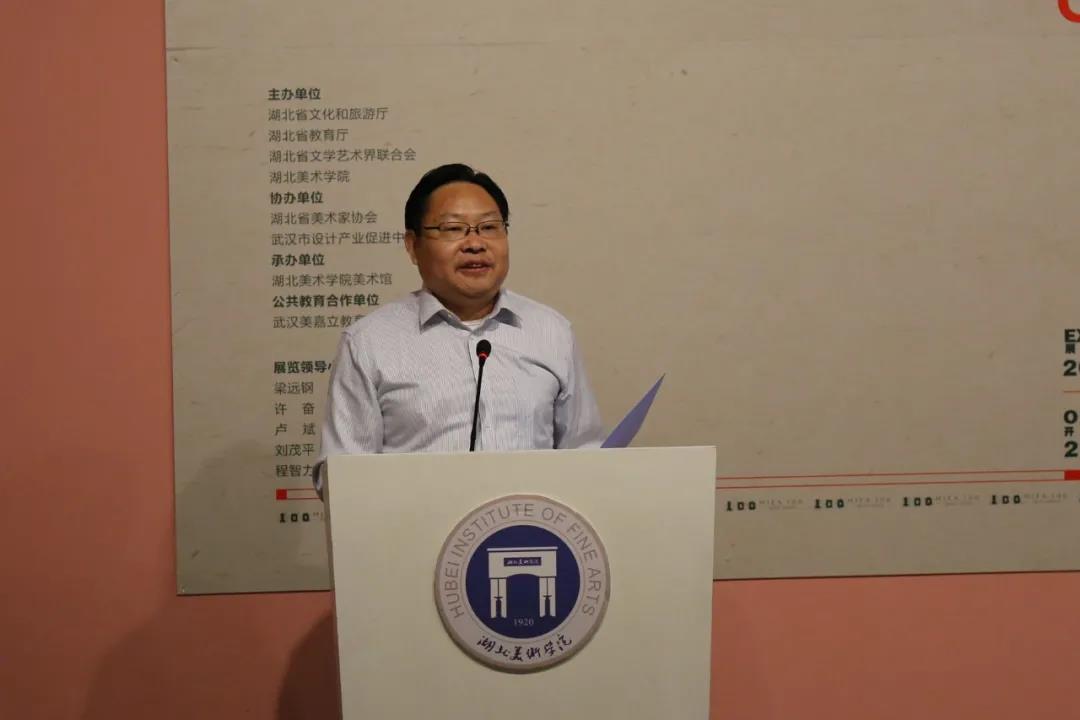
Ma Shangyun, party member and ViceChairman of Hubei Provincial Federation of Literary and Art Circles gaveaspeech
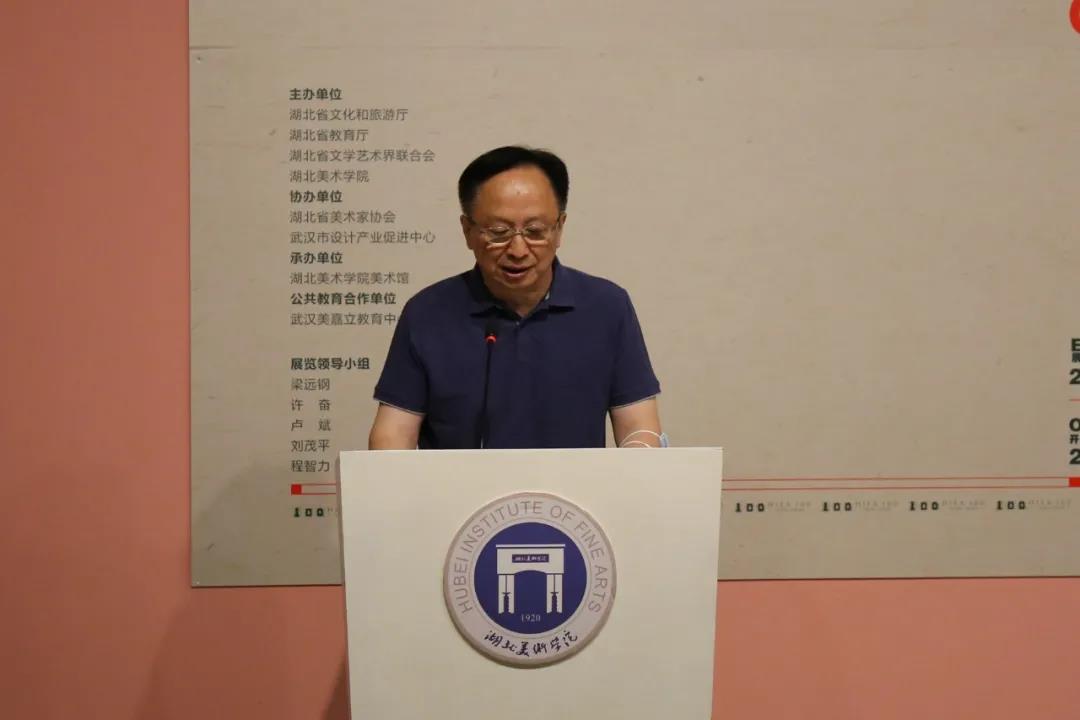
Zhang Pu, family member representative gaveaspeech
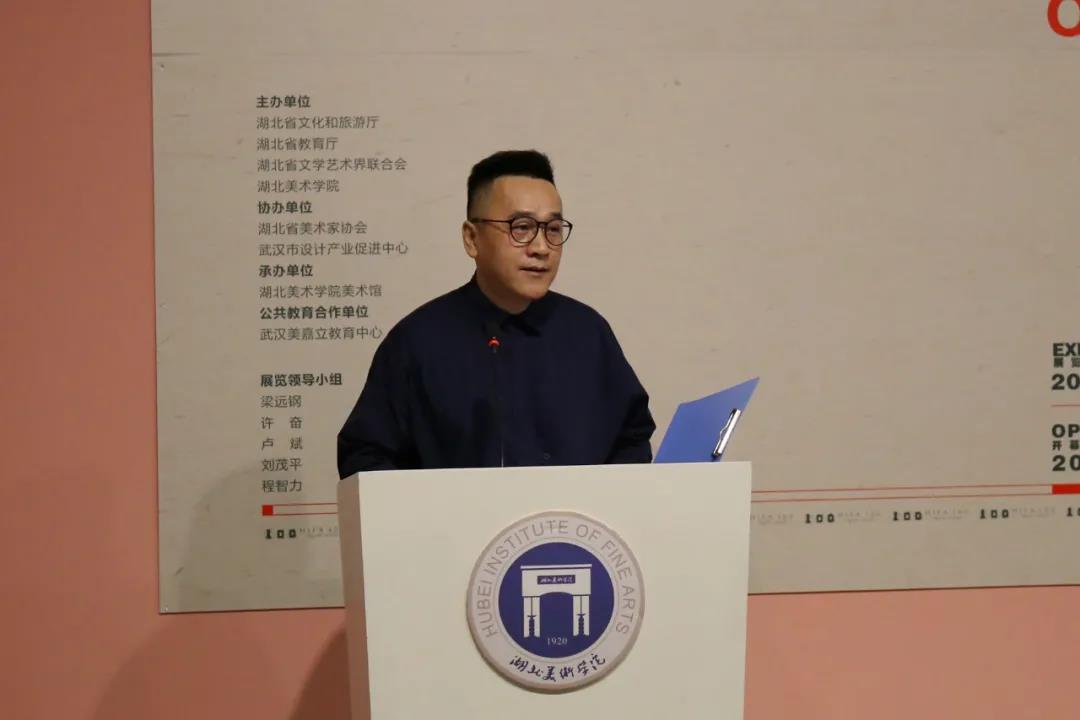
Zhang Jie, Curator of the Art Museum presided over the openingceremony
Preface
As one of the earliest artacademies inChina,HIFAis an important birthplace of modern higher education of art in China. In itscenturial teaching history, a large number ofteachers with both professional excellence and moral integrity have been gathered, including the outstanding representatives Zhang Zhaoming (1897-1976), Wang Xiazhou (1902-1976) andZhang Zhenduo (1908-1989), who are renowned as“The Three Senior Artists in Hubei”,and had played the historical role of connecting the preceding and the following, and laid solid theoretical foundation in the centurial history of HIFA. Centering on the subject of“The Three Senior Artists in Hubei”, theArt Museum of Hubei Institute of Fine Arts has carried out continuous and in-depth collection and research works.
In order to continue to carry out the instruction of General Secretary Xi Jinping to “carry forward the fine tradition of patriotism for the people,advocatingvirtue and art”, theArtMuseum ofHIFA has further intensified its research on the subject of “The Three Senior Artists in Hubei”, and, based on the new collectionachievements in recent years, it hassorted andresearched more than one hundredworks and historical materials that have not yet been made public, and uncovered a number of precious survivingteaching sketches fromthespecial period, including flowers, bamboo and stones on Doufang clay papers in the 1940s, birds singing onpapers made from bambooin the 1950s and 1960s after the founding of the People’s Republic of China, and sketching demonstrations on drawing papers in the 1970s during the decade of turmoil. These sketches left over from the special period, are not onlyart, but also with an epitome of the conscience and tenacity of the teachers, carrying the spirit andacademicvein ofHIFA scholars who never forget their initial aspiration andkeep promoting aesthetic education.
Based on the previous research on the subject of “The Three Senior Artists in Hubei” and theteachingsketches, theArtMuseum ofHIFA has spent two years preparing for the “Moral Models and Masters of Arts– Retrospective Exhibition on Lectures and Historical Data of‘The Three Senior Artists in Hubei’”. The exhibition received great support from the Ministry of Culture and Tourism, and was selected for the 2020 Project of National Arts Museum Refined Collection Exhibition Season.
“Moral Models” here refer not only to the demonstration of theteaching sketches, but also to the threemasters’ model of virtue for others.It contains the intention of carrying out aesthetic education. By means of works, historical materials and images, the exhibition reviews theteaching sketchesand relevant historical materials made by “The Three Senior Artists in Hubei” for students in the 1940s during theAnti-Japanese War, the 1950s, 1960s, 1970s and other special periods after the founding of P.R.C. Among the more than 180 works exhibited this time, nearly 60 works are collected byHIFA, and this is the first time that they are open to the public. The exhibition is not only thestageresult of the continuous refinement and in-depth collection and research works of the Art Museum, but also a part of the rescue research on different periods, different objects and individual cases of artists that have been developing continuously since Wuchang ArtAcademy. Weaim to make clear the exploration trace of aesthetic education ofHIFA in the past hundred years and clarify the cultural tension of fine arts in Hubeithroughstudies on running phenomena and cases in different periods, so as to provide academic track with“rules to follow” for the enrichment of art history and the study of art history phenomena. I believe that this exhibition will bring new artistic thinking and enlightenment to the audience and researchers, and the spiritual warmth inthe paintings willalsobe passed down from generation to generation. In addition,it has positive practical significance on researching how torespect the tradition of running an academy, carrying forward thespirit of Chinese aesthetic education,and cultivating new talents ofthetimes.
Xu Fen, on Teacher’s Day on September 10, 2020, in Tanhualin
Exhibition Site
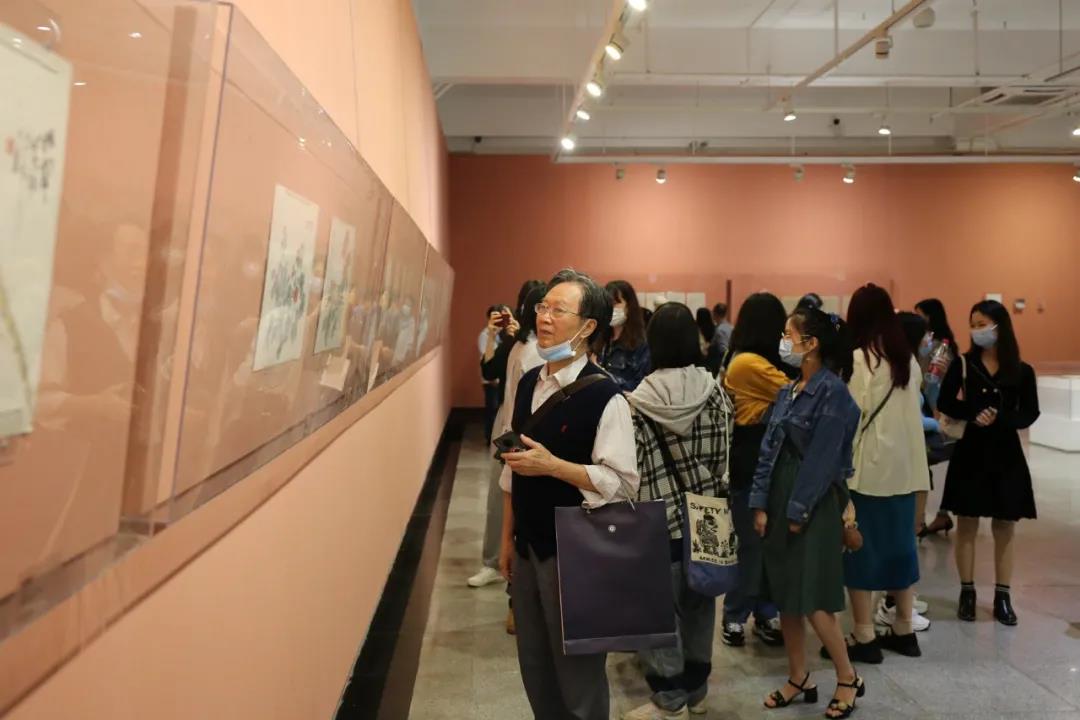
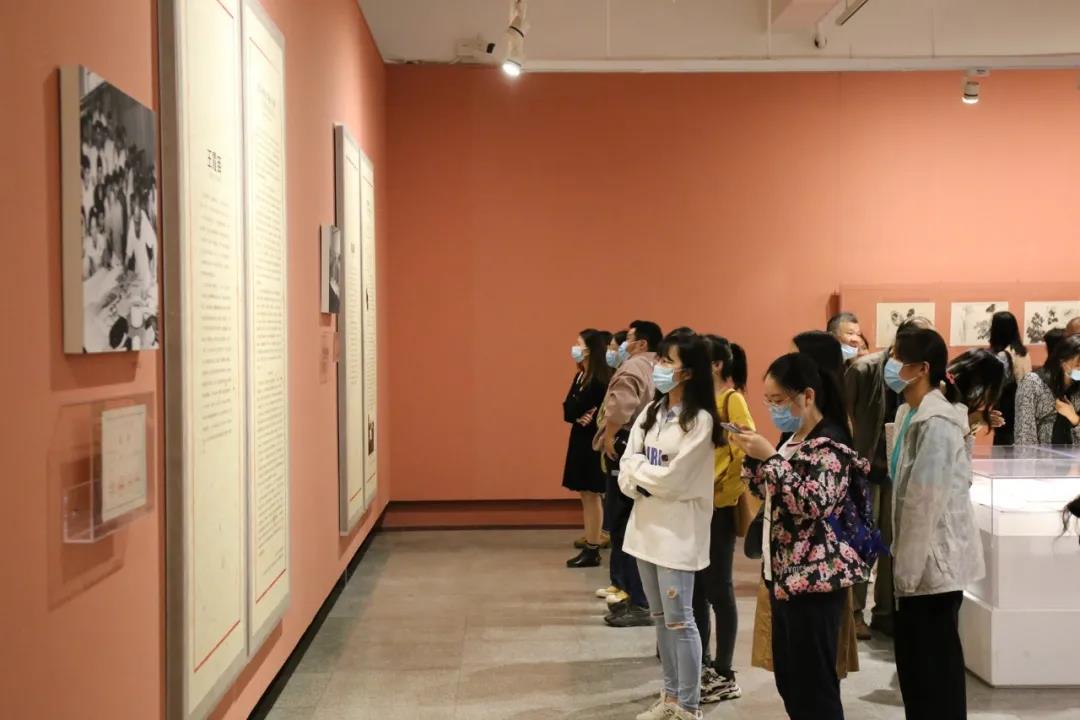
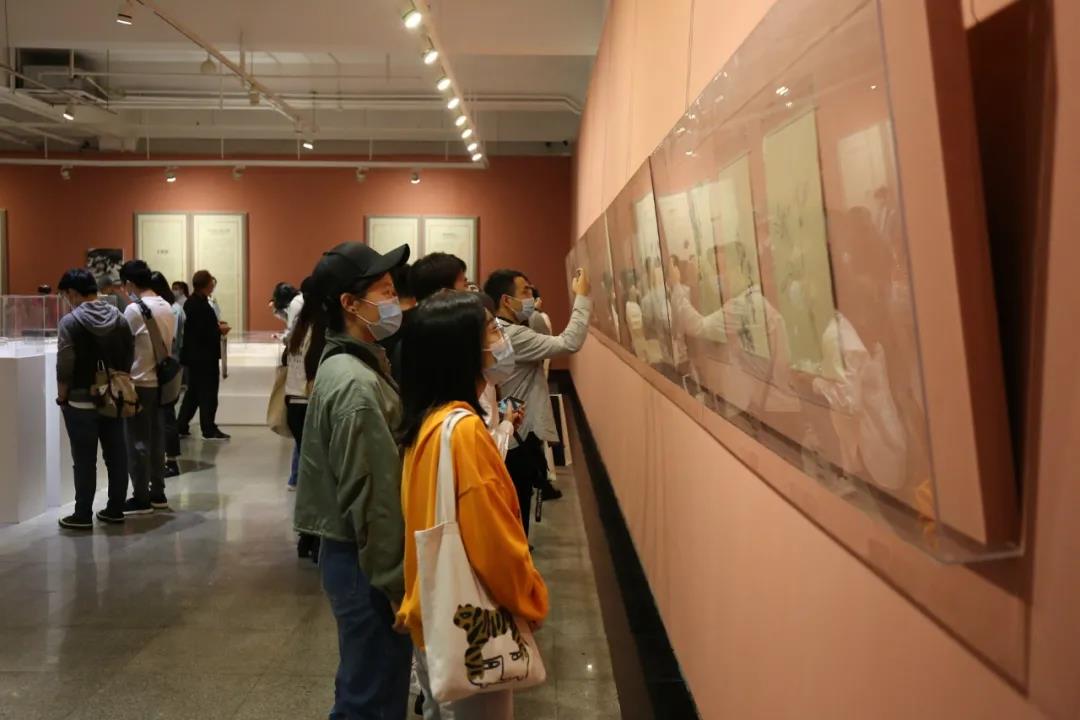
“The Three Senior Artists in Hubei” and Some of Their Works
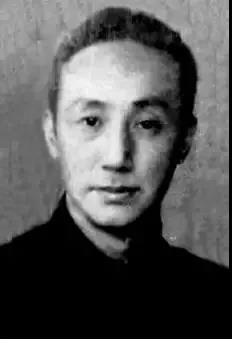
Zhang Zhaoming (1897-1976)
Zhang Zhaoming, formerly named asZhang Daqi,styled Zhaoming, and used thepseudonym of Yi’an, was born in Wuchang, Hubei province in August 1897. He graduated from Hubei No. 1 Normal School in 1919, andfrom Peiping ArtAcademy in 1923, where he studied under Wang Mengbai, Chen Shizeng and Yao Mangfu. Since 1923, hestarted to teach at Wuchang Fine Arts School. In 1926, hestarted to serve as thechairperson of Wuchang Fine Arts School. In1927, he organized “Mei Society” with fellow friends. In 1929, he becamea director of Wuchang Fine ArtsSpecializedSchool. In 1940, he obtained the “ProfessorCertificate” issued by the Kuomintang Ministry of Education. In 1942, he becamethe academicdirector of private Wuchang Fine Arts Academy. In 1945, he became President of Wuchang ArtAcademy. In1946, he organizedto relocatethe school back from Sichuan to Wuhan. In 1947, he became theinterimchairman of Wuhan Branch of The All-China Fine Arts Association. In 1951, he became thedirector of the Theoretical Teaching and Research Group of the Department of Fine Arts, Central South Institute of Literature and Art. In 1956, he was appointed professor of Central South ArtAcademy. In 1957, he served as the first and secondchairman of Wuhan Branch of Chinese Artists Association (the predecessor ofHubei Artists Association), director of the National Artists Association, vice chairman of Hubei Provincial Federation of Literature and Art Circles, standing member of Wuhan CPPCC, and representative of the provincial People’s Congress, and attended the National Congress of Literary and Art Workers. In 1963, he was invited by Hua Junwu to hold a solo exhibition in Beijing, making him the first in Hubeiprovince to hold a solo exhibition in Beijing since the liberation. In the same year, the joint exhibition of “TheThreeSenior Artists in Hubei” was held in Wuhan Exhibition Hall. “TheThreeSenior Artists in Hubei” was first mentioned.
His paintings of flowers and birds enjoy a high reputation. In the early years,his works combinedboth realistic andimpressionistic styles,and unified the realistic truth with affection expression. After the age of seventy,his style changedfrom small freehand brushwork to abbreviatedgreat affection expression, from using more colors to using more ink. His works becameplainer and more innocent,reflecting the true meaning of freehand brushwork. Zhang Zhaoming had been engaged in art education for many years andwas the pioneer of modern art education in Hubei province. As Zhou Shaohua said, “He not only left us precious artistic wealth, but also cultivated many fine arts talents.”
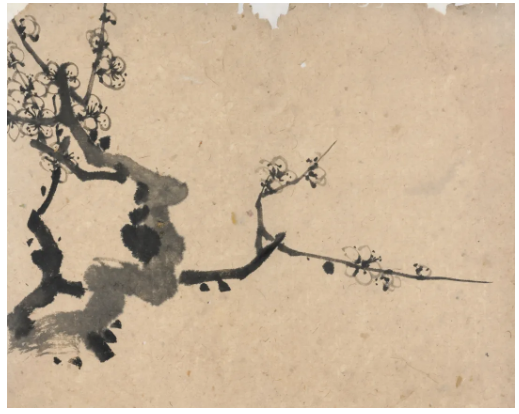
Traditional Chinese paintingPlum Blossom by Zhang Zhaoming, 1940s, paper painting,36cmx41.5cm
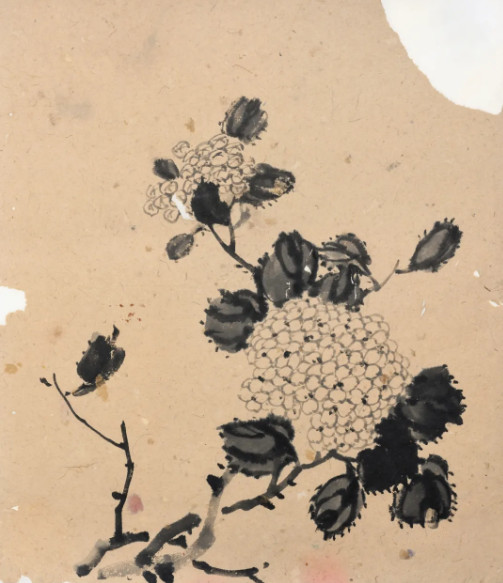
Traditional Chinese paintingBig-leaf Hydrangea by Zhang Zhaoming, 1940s, paper painting, 42cmx36cm
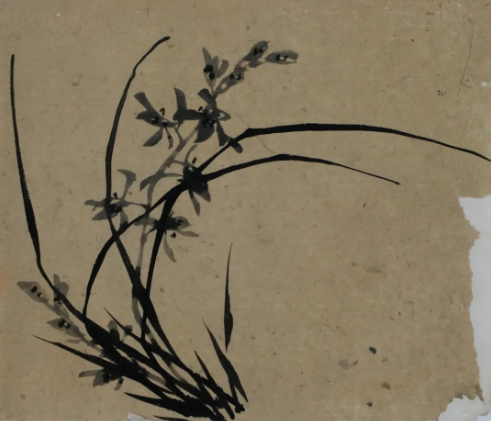
Traditional Chinese paintingOrchid by Zhang Zhaoming, 1940s, paper painting,36cmx42.5cm
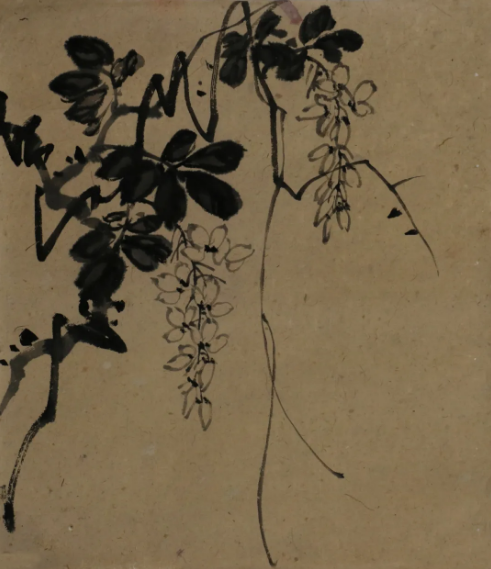
Traditional Chinese paintingWisteriaby Zhang Zhaoming, 1940s, paper painting, 42cmx36cm
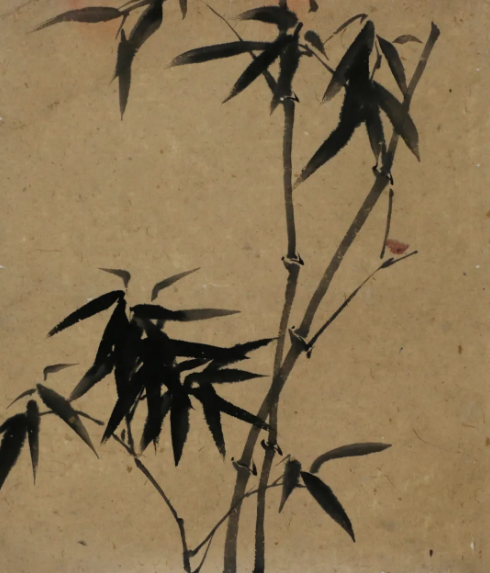
Traditional Chinese paintingInk Bamboo by Zhang Zhaoming, 1940s, paper painting, 42cmx36cm
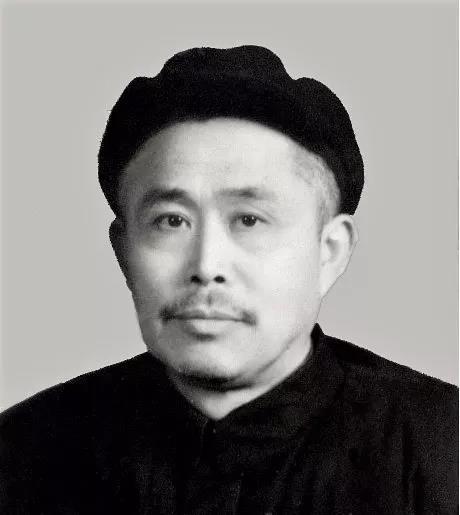
Wang Xiazhou (1902-1976)
Wang Xiazhou, once used thepseudonym of Huai Yue Shi Zhu, was native of Zaoyang,Hubeiprovince. In 1924, he graduated from NanjingFineArts Specialized School in 1924. Since 1926, he began to teach in Wuchang Fine Arts Specialized School (it was renamedasWuchang ArtAcademy in 1930). After that, he served successively as an associate professor in HubeiCollege of Education, Central China NormalCollege and Hubei Institute of Art, vice chairman of Wuhan Branch of Chinese Artists Association, member of Hubei Provincial Federation of Literary and Art Circlesand member of the thirdsession ofHubei CPPCC. His artistic attainments are comprehensive, with achievements in figures, landscape, flowers and birds, especially in flower and bird paintings. He had been engaged in art education for a long time andwas one of the founders of traditional Chinese painting in HubeiCollegeof Arts.
In the earlyyears, he focused onfigures and wasespeciallygood at painting ladies, and was known as “BeautyWang”. Later, hefocused on flower and bird paintings, deliberately createdunique styles and finally formed his own style after several alterations inpainting methods. In the 1950s,he createda fresh and bright flower and bird painting style, giving the traditional boneless painting method a distinctive sense of the times. His representative works such asCanna andTigerLily had a great impact on the flower and bird paintingcircles of China.He was best atpainting wisteria,and painted countless works of this theme. The1960swas theheyday of his creation,when he called himself the “sixtychanges”. His flower and bird paintings turned to ink-and-wash freehand brushwork and his skill was increasingly sophisticated. Interms ofthe subject matters, he strived to get rid of the predecessors’shackle, and deliberately sought wild plants and crops that have never been painted as materials, and molded them into interesting artistic images, which enriched the subject range of flower and bird paintings. His workswas exhibitedin many nationalfinearts exhibitions.Wisteria painted in 1959 was presented to North Korea as a national gift.Wisteria andIron Palm created in 1964 were collected by the National Art Museum of China. In 1980, the Wuhan Branch of Chinese Artists Associationorganized the “Wang Xiazhou’s Posthumous Works Exhibition” in Wuhan Exhibition Hall. In 1981, Hubei People’s Publishing House publishedWang Xiazhou’s Painting Collection. In 2009, Hubei Fine Arts Publishing House publishedWang Xiazhou’s Chinese Painting Art.
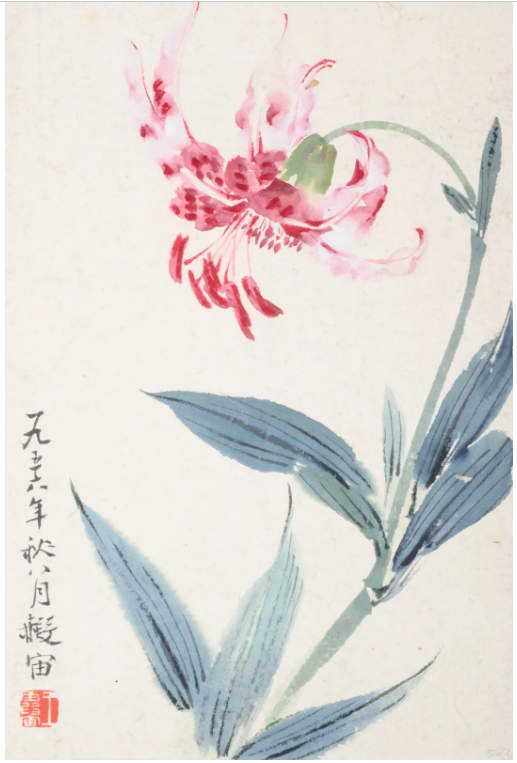
Shouyi Park ConservatorySketching - BambooLilybyWang Xiazhou, 1956, paper painting, 17cmx27cm
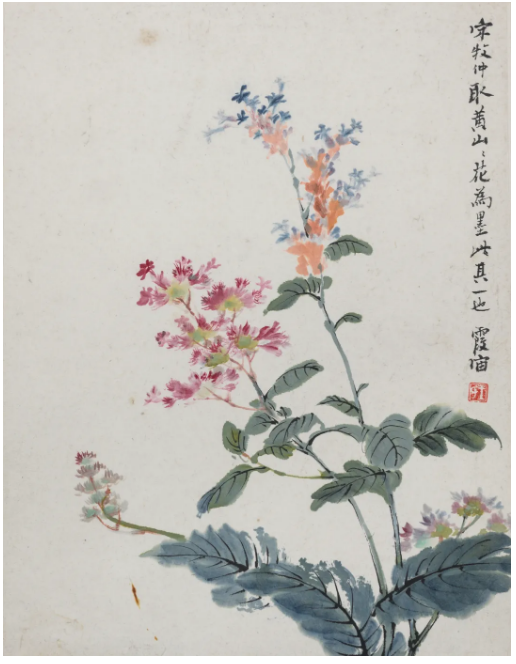
Wild Flowers on Mount Huang byWang Xiazhou, 1957, paper painting, 33cmx22.5cm
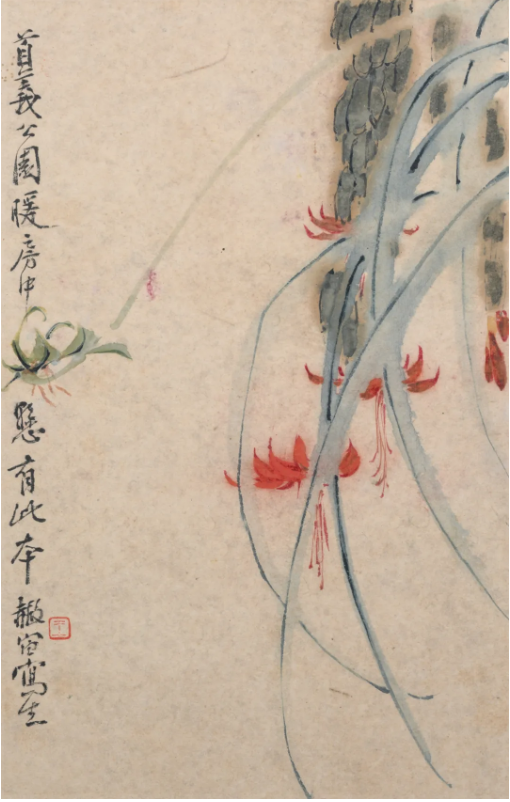
Shouyi Park ConservatorySketching -Fuchsia byWang Xiazhou, unknown year, paper painting, 17cmx27cm
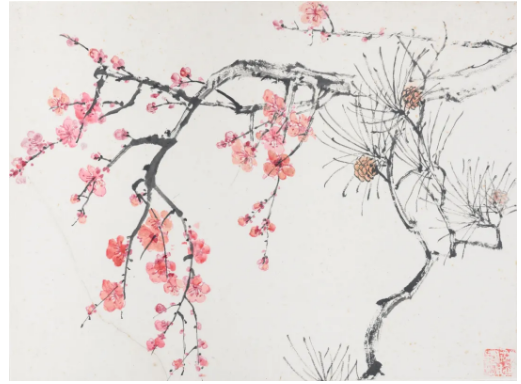
Red Plums and Pine Cones byWang Xiazhou, unknown year, paper painting, 34cmx46cm
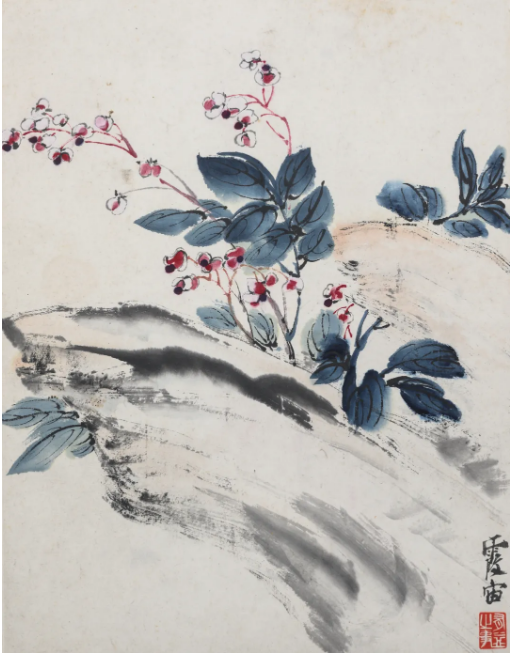
Sketching on Mount Huang byWang Xiazhou, 1957, paper painting, 33cmx25.5cm
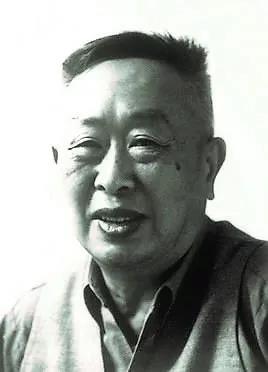
Zhang Zhenduo (1908-1989)
Zhang Zhenduo, formerlynamed as Daoyu, alsonamed as Dingsheng, styled Wentian, and used thepseudonym of Zhenduo, was born in Pujiang, Zhejiang. He graduated from Shanghai Art Academy in 1927. In 1932, he and Pan Tianshou formed the “White Society” painting society. At the age of 25, he was appointed as professor ofShanghaiXinhua ArtAcademy. After that, he was successively appointed as professor of National ArtAcademy in Kunming, SouthwestFineArts Academy in Chongqing, Wuchang ArtAcademy, Central China NormalCollege, Hubei Art College and HubeiInstituteof Fine Arts. In the early years duringAnti-Japanese War, he was introduced bytheEighthRouteAmyWuhanOfficeto study in Yan’an North ShaanxiPublic School. After the liberation, he successively served ashead of the Art Section of Culture Department of Central South Military and Political Commission, vice president of the Preparatory Commission of Central South Federation of Literary and Art Circles, the Executive Committee of Wuhan Federation of Literary and Art Circles, and Hubei Artists Association,deputy president of Hubei Art College,andwas elected asmember of Chinese Federation of Literary and Art Circles,member of theCentralCommittee of China Association for Promoting Democracy, representative of Hubei Provincial People’s Congress, and member of the StandingCommittee of the CPPCC,Hubei province.
Zhang Zhenduowas a famous flower and bird painter and art educator in China; he wasgood atpaintingflowers and birds, and mastered painting oflandscape and figures; he excelled at calligraphy and poetry. Hewas diligent in study, magnanimousin personality, and his works were rooted in life and featured innovation.During over 60 yearsofart education,he had always taken inheriting and developing Chinese painting and cultivating art talents as his own responsibilities. He learned from Shanyin painting school and received his early education from Jing Hengyi, Lv Fengzi, Pan Tianshou, etc. Drawing the strengths from manyschools, his paintings were simple, straightforward, vigorous,and unique instyle. Li Keran once described him in this way: “Zhang intheSouth andLiintheNorth(Li Kuchan)”. His artisticcreationcareer spanned from the 1920s to the 1980s, and his footprints spreadthroughout most of China.During the period, he created a large number of influential works and formed his unique artistic style, which was recognized andhighlypraised by the Chinese painting circle. His representative workswere exhibited in the United States, Japan, Germany, Canada, Tanzania and other countries, and were collected by the National Art Museum of China. Some of his paintings were published in A Collection of Flowers and Birds by Zhenduo,A Collection of Paintings by Zhang Zhenduo andA Collection ofWorks by Zhang Zhenduo.
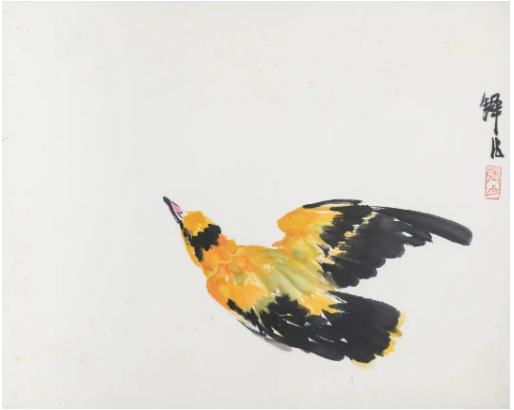
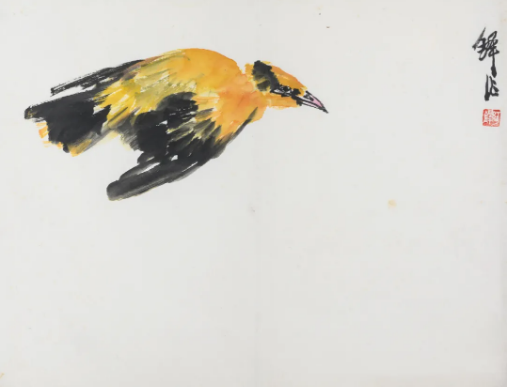
Teaching sketchOriole by Zhang Zhenduo, 1975, paper painting,37cmx46cm
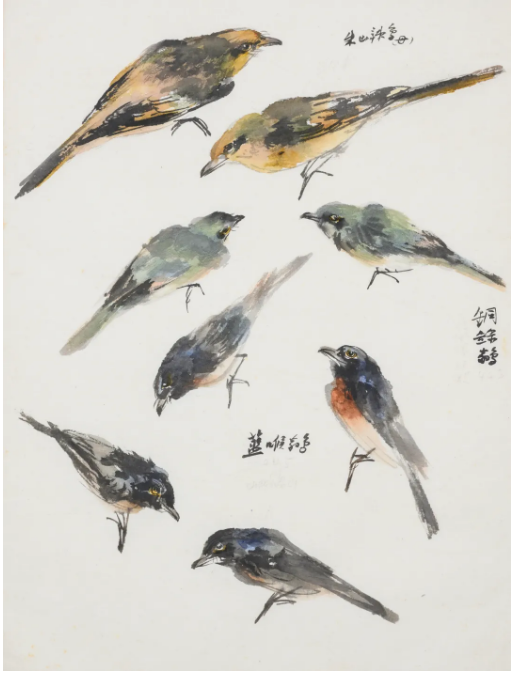
Various Forms ofMount Zhu Hawfinches (Female), AeruginousFlycatchers, and Yellow ThroatFlycatchers by Zhang Zhenduo, 1957, paper painting, 45cmx34cm
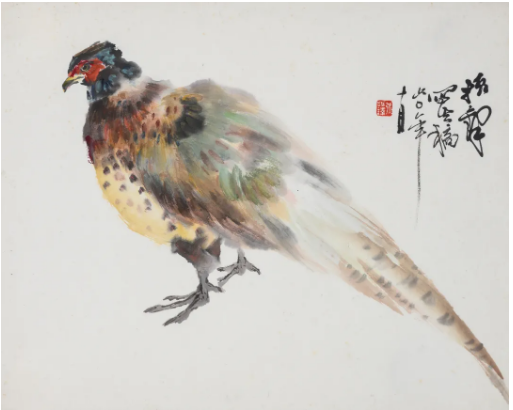
Pheasant by Zhang Zhenduo, paper painting,36x45cm
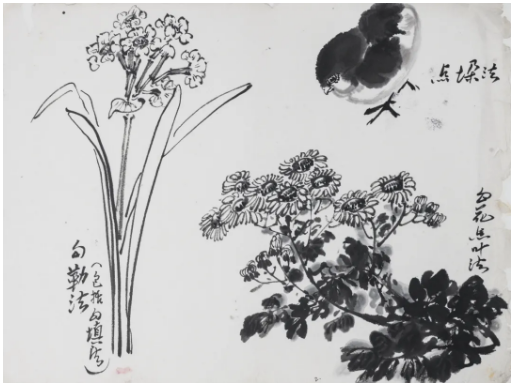
IllustrationsofSeveral Painting Techniques of Plants andAnimals by Zhang Zhenduo, paper painting, 1960s,45.5x35cm
